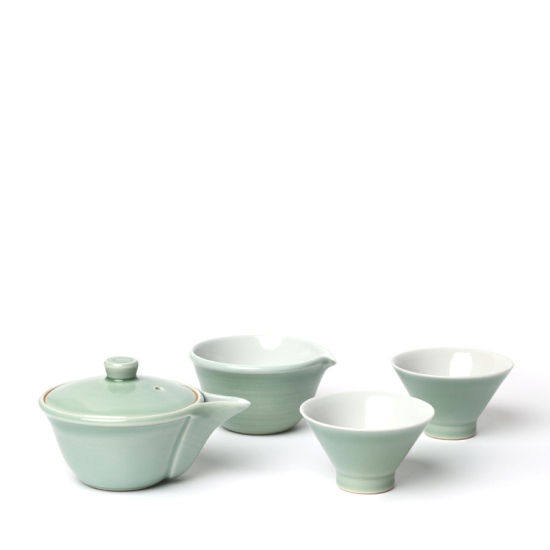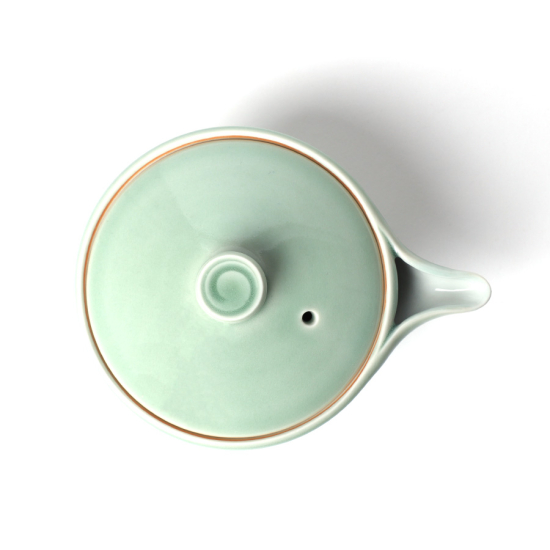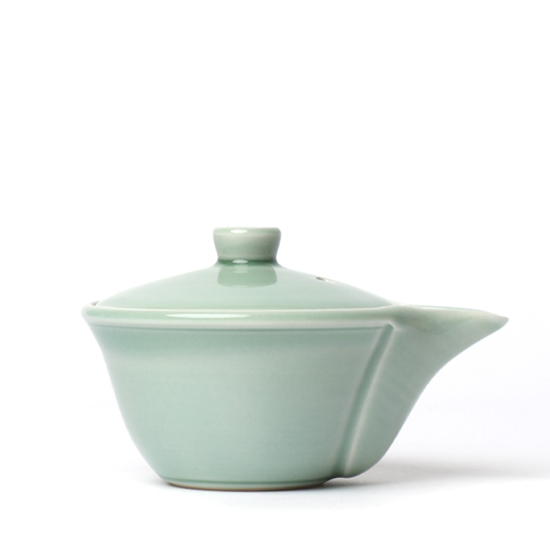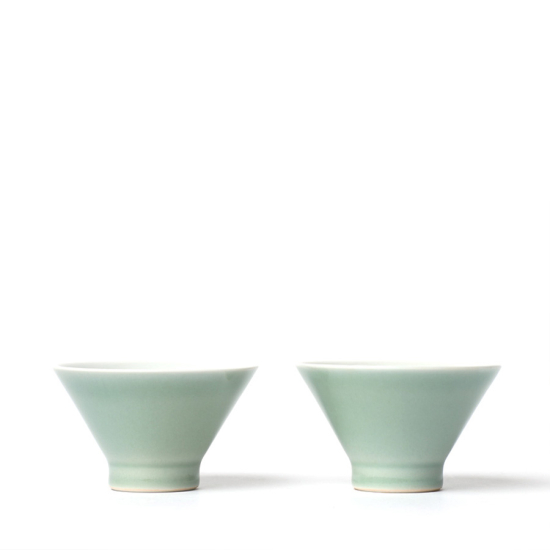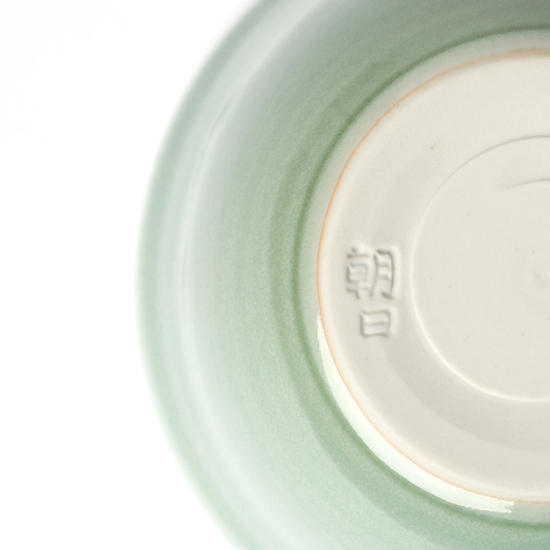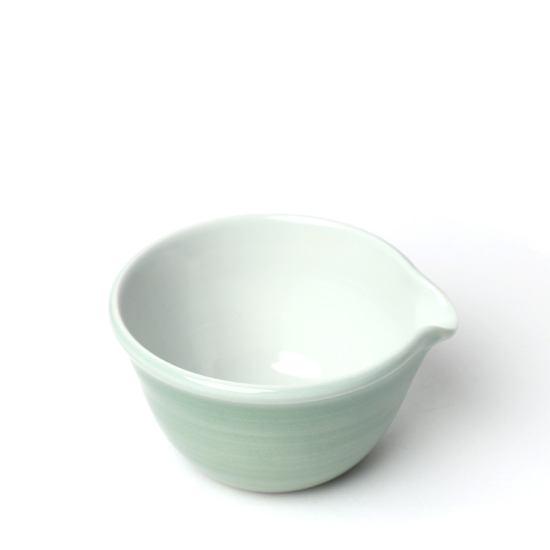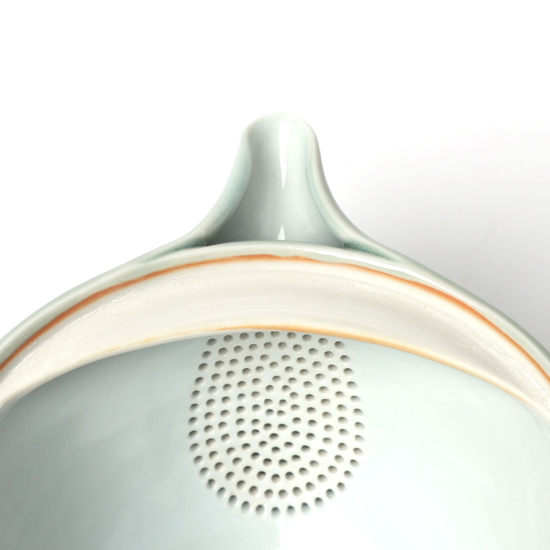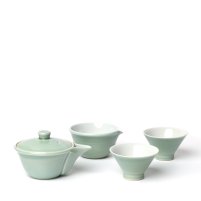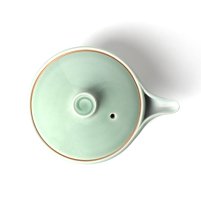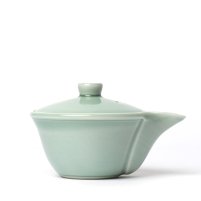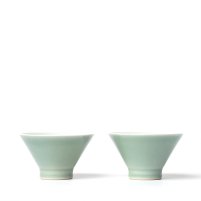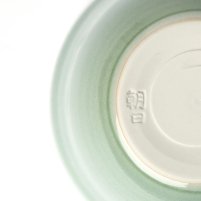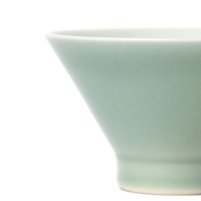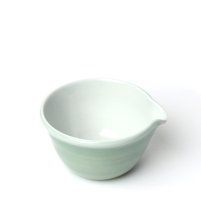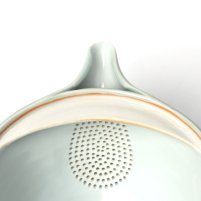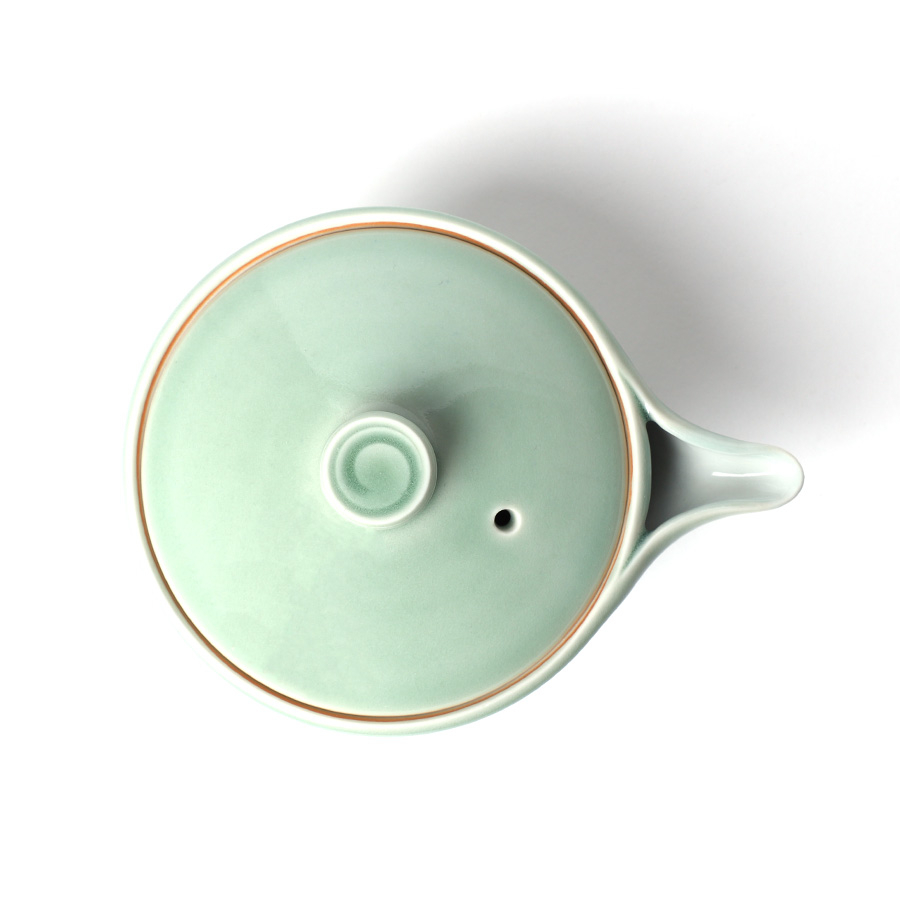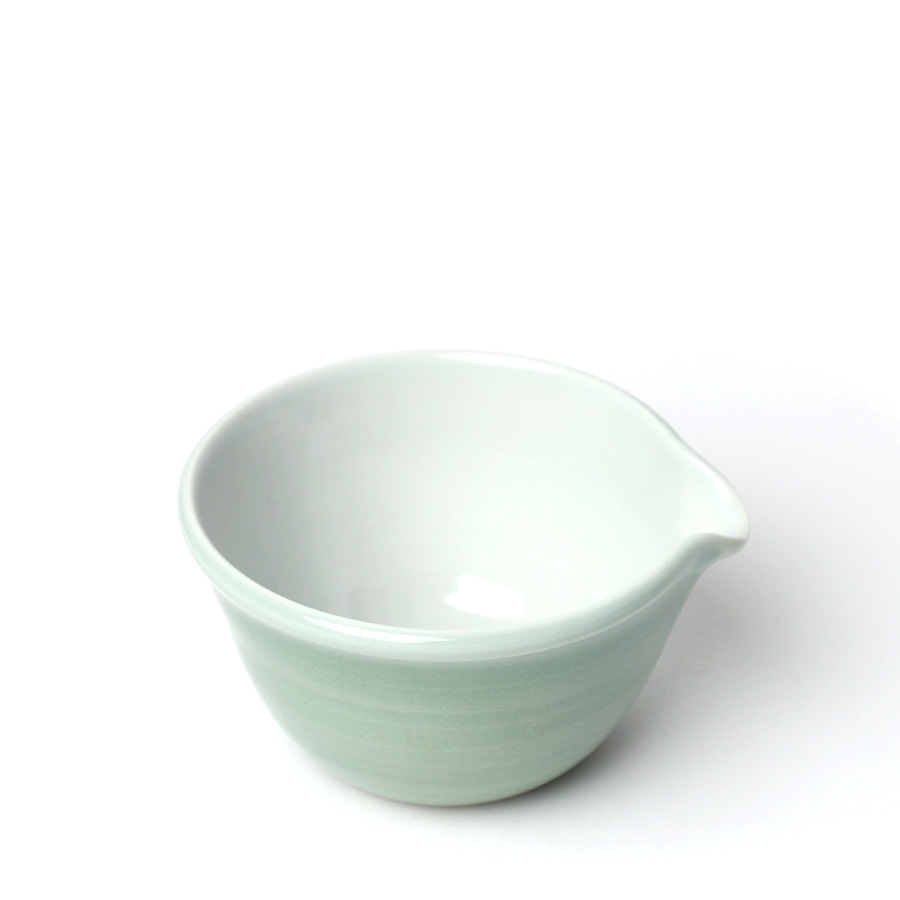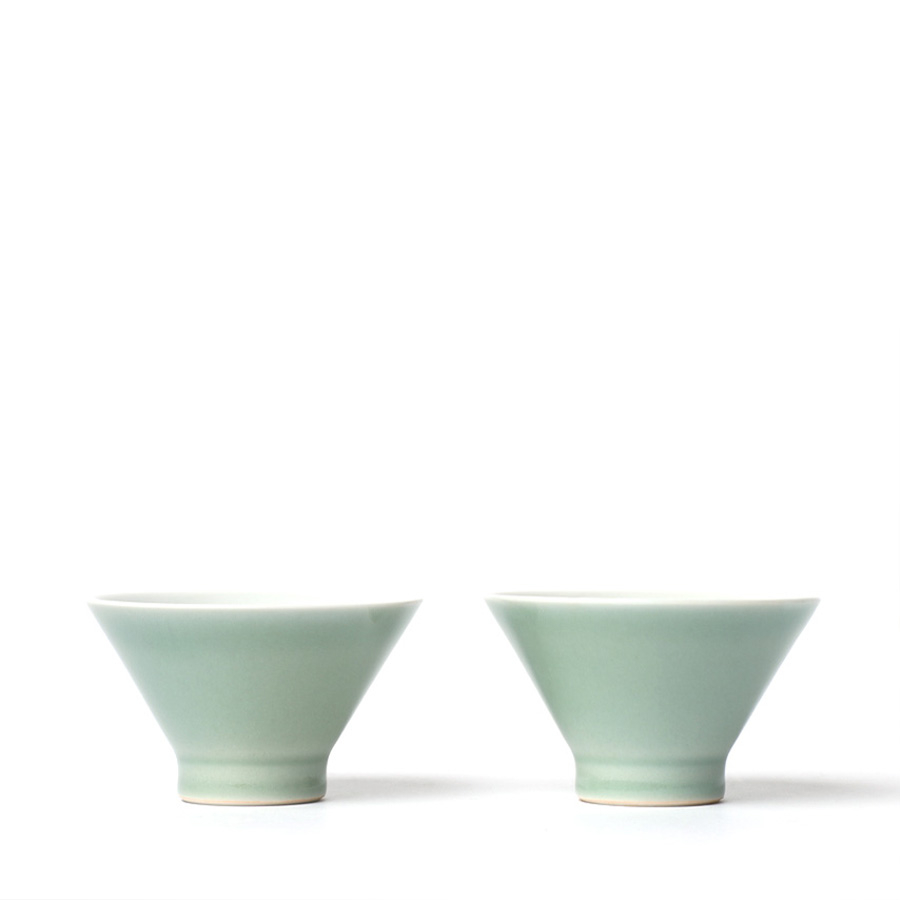Located in the Uji region of Kyoto prefecture: Japan’s historic centre for tea cultivation, the Asahiyaki kiln has kept its fires burning for over 400 years, counting samurai to the reigning Imperial Family as clients. Established by Tosaku I on the cusp of the shift from the Momoyama to the Edo period, the kiln earned the sobriquet “Asahi” from none other than the celebrated tea ceremony master, Kobori Enshu. Not only do Asahiyaki continue to produce traditional matcha ceremony utensils, but since the 19th century as interest in sencha grew, they have also specialised in delicate porcelains for enjoying fine leaf teas. Most of their collections are fired in gas kilns, however a wood-fired climbing kiln is also in operation, affectionately named Gen'yō, which was built in 1975 as the world's first smokeless ascending kiln.
Japanese Tea Set
Kahin Seiki
Asahiyaki
SKU
5623
Yoshi En has recently grown out of Sunday Natural to become an independent premium tea store. As part of this transition, some products may still be shipped in Sunday Natural packaging.
Elegant four-piece Japanese tea service with handleless hōhin teapot, yuzamashi cooler and two kumidashi tea cups in an aqueous “kahin seiki” blue celadon glaze that evokes the clear waters of the Uji river in Kyoto, where the 400-year-old Asahiyaki kiln is based along its picturesque banks.
| Product | 4-piece Tea Set |
| Maker | Asahiyaki, ASAHIGAMA standard |
| Origin | Uji, Kyoto, Japan |
| Material | Porcelain |
| Glaze | Celadon |
| Dimensions | Hohin: Ø10 x 7.5cm (excluding spout) Yusamashi: Ø9.8 x 5.5cm Kumidashi: Ø8.5 x 5cm |
| Volume | Hōhin: 150ml Yusamashi: 150ml Kumidashi: 60ml |
| Weight | 550g |
| Strainer | 150 hole ceramic strainer |
| Artist's Mark | Seal to base |
| Packaging | Cardboard box |
Each item is handmade therefore sizes, colour and glazing may vary slightly.
In stock



